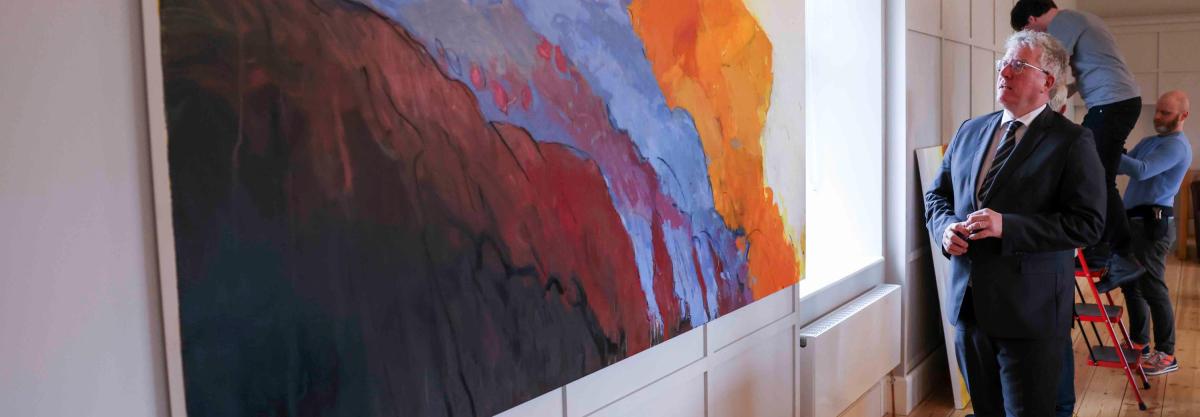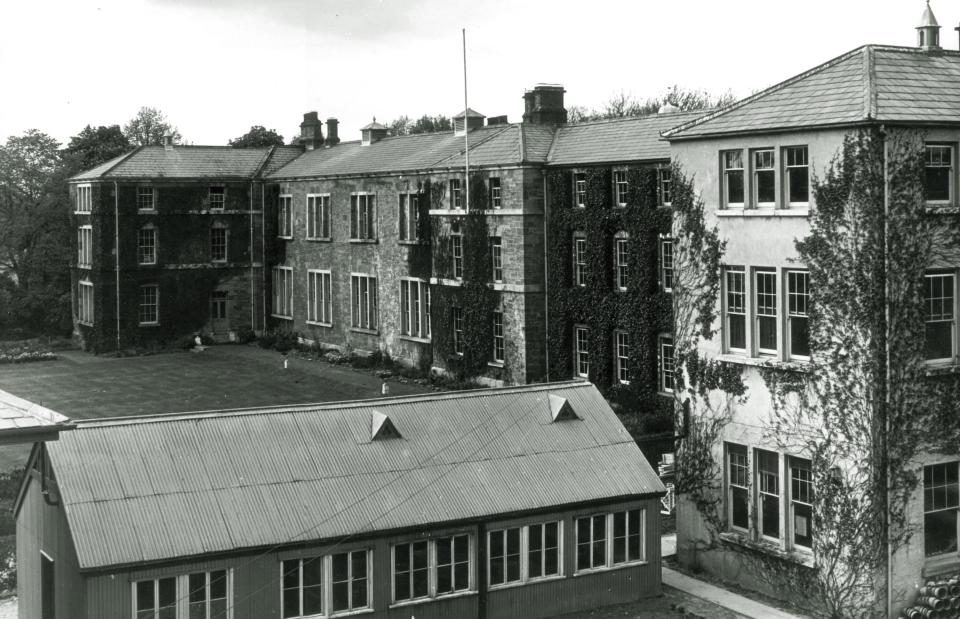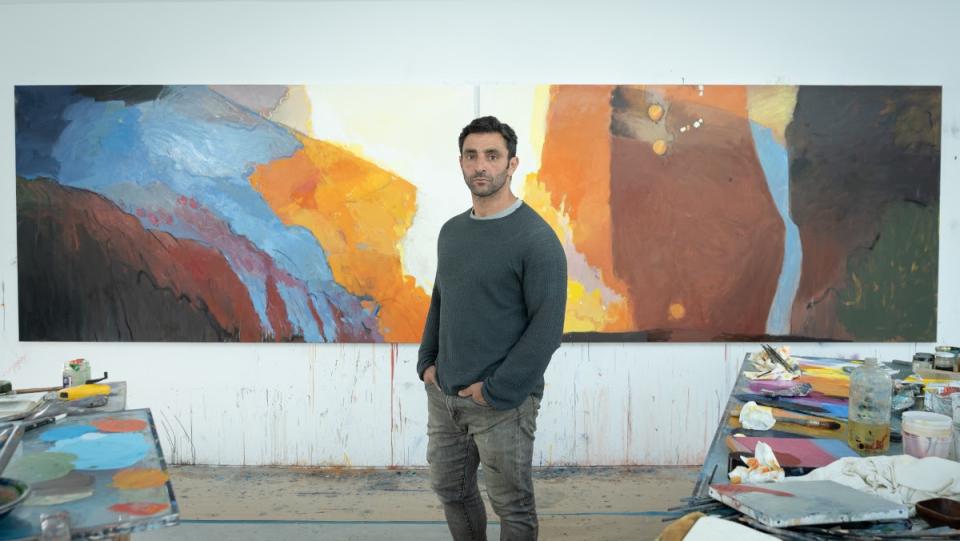

- NEXUS - by Richard Hearns
1838 Art Commission, Albert College, DCU Glasnevin Campus
Introduction
To acknowledge the historical significance of Albert College and its evolution into DCU, a vibrant centre of knowledge and research with nearly 20,000 students, artist Richard Hearns was commissioned to create a special artwork for the 1838 Dining Room. This piece was commissioned with a generous gift from John and Jean Saunders, connecting with our past and to the future as DCU continues to transform lives and society.

Albert College, DCU
History
Albert College, the oldest building on DCU's Glasnevin campus, boasts a rich heritage dating back to 1838. Named in honour of Prince Albert, Queen Victoria's consort, who visited after the Great Famine to observe the development of Irish agriculture at the Glasnevin Model Farm, the building has long been a cornerstone of academic and social life. Today, Albert College houses the 1838 Dining Room, a key social hub for DCU. This space hosts high-profile events including celebrations, award ceremonies, meetings, and seminars.
The Artwork
"Nexus," by Richard Hearns, is a monumental diptych - two canvases measuring five by one and a half metres. It’s large scale perfectly complements the architectural setting, enveloping a central window in the room. The artwork radiates from the heart of this important space, symbolising the university’s agricultural roots and its journey to becoming a leading institution for knowledge and research. Hearns' piece serves as a powerful tribute to the enduring legacy and future aspirations of DCU.
Artist’s Statement
Reflecting on the creation of the painting, Richard Hearns says he intended the work to act as a point of connection (or nexus) between the historical past (the 1838 room and the Great Famine) and the present pursuit of knowledge at the university. Hearns says the work also links the microscopic world analysed within the room (when it served as a laboratory) to the grand landscapes of Ireland. For Hearns, the painting’s "luminous core" represents the "breakthrough idea" and the power of discovery, which is at the heart of academic exploration.
This idea of connection is also suggested in the painting’s interplay of lines and shapes, communicating the idea of a complex web of connections. For Hearn, this network reflects “the interconnectedness of knowledge” between the disciplines of science, art, and history.

- NEXUS - by Richard Hearns
Artist’s Biography
Richard Hearns paints in the wild landscape of The Burren National Park in County Clare, Ireland. Each painting is an extension of his physical surroundings - earth, sea and sky - materialising the artist’s experiences and memories of colour and natural phenomena.
Born in Beirut and raised in Ireland, Hearns is deeply aware of the unique cultural backgrounds of both aspects of his heritage. Articulated in his abstract paintings, his experiences and connections with the traditions of these separate locations and cultures combine to form a triangular history. The exuberant colours of his works express his experiences of nature and its intensity, inviting the viewer to participate in this celebration of memory, colour and form.
